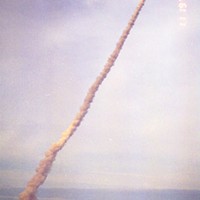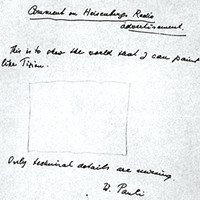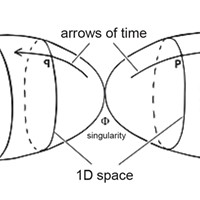[
{
"name": "Top Stories Video Pair",
"insertPoint": "7",
"component": "17087298",
"parentWrapperClass": "fdn-ads-inline-content-block",
"requiredCountToDisplay": "1"
}
]
Albert Einstein told physicist George Gamow that the greatest blunder of his life was his introduction of a "cosmological constant" designated by Λ, the Greek letter lambda. In his 1915 theory of general relativity, Λ, a sort of ubiquitous "anti-gravity," keeps the universal static, neither expanding nor contracting. But in 1929, Edwin Hubble showed that the universe is expanding — hence Einstein's "blunder" remark.
Fast forward to 1998, when two teams of cosmologists determined that the rate of expansion was accelerating. Since all matter is attracted to other matter by gravity, the cause for this acceleration couldn't be particles (which mutually attract) but some mysterious repulsive field permeating everywhere and everything: dark energy. Which, in its simplest form, is Einstein's cosmological constant: not a blunder but a stroke of genius.
The teams used distant type 1a supernovae to detect this cosmic acceleration. A supernova is a massive, violent, short-lived explosion as a star ends its life. What's special about type 1a supernovae is their uniform brightness, so by measuring their apparent luminosity, astronomers can calculate their distance, like observing the apparent brightness of a known wattage light bulb. In addition, their red-shifts (when wavelengths from receding objects "stretch out," aka the Doppler shift), establish how fast they're moving away from us. By comparing the apparent brightness (hence distance) and red-shift (hence receding velocity) of some 110 type 1a supernovae, the two teams deduced that the expansion of the universe was increasing with time.
Soon we, the lay public, were told, in the form of slick pie-charts (see illustration), that ordinary observable (baryonic) matter — the atoms that make up you, me, Earth and stars — constitutes a mere 5 percent of the mass-energy of the universe. (According to general relativity, mass and energy are interchangeable.) Another 24 percent comes from "dark matter" (the stuff that makes galaxies rotate faster than they "should," perhaps a new form of sub-atomic particles); while the bulk (71 percent) comes from "dark energy."
Note: (1) Dark energy isn't dark, it's transparent (dark things absorb light); (2) despite apparently violating the law of conservation of energy, the strength of dark energy per unit volume stays constant in an expanding universe. This means it's destined to swamp all other forces (which become more diluted as the universe expands) and assures that the universe will never contract back on itself, but will expand forever.
Which is pretty much how things have stood since 1998. Adam Riess and Saul Perlmutter, leaders of the two "accelerating expansion" research teams, received Nobel Prizes for their work in 2009. Then, in a bombshell paper published last October in the journal Astronomy & Astrophysics, a fresh team of researchers question the findings of Riess and Perlmutter, who, the team said, were working from skewed samples of supernovae. Instead of measuring accelerating expansion, Riess and Perlmutter were misled by our galaxy's local motion relative to the cosmic microwave background (a sort of frame from which all motion can be compared). After examining fresh data for 740 "non-skewed" type 1a supernovae, the current authors conclude, "the cosmic acceleration ... may be an artifact of our being non-Copernican observers, rather than evidence for a dominant component of 'dark energy' in the Universe."
The new paper had barely hit the internet before other cosmologists began picking it apart — followed by rebuttals by the original authors. Such is the way of scientific progress. However, if it's shown to be correct and expansion of the universe isn't accelerating, then dark energy appears to be a non-existent boondoggle. Meaning, our universe may ultimately implode upon itself under the force of gravity rather than (as predicted by dark energy) keep expanding, cooling all the while. Wouldn't you rather everything ends in a dramatic "big crunch" than in an endless whimper?
Speaking of...
-

Rocket Science
Oct 26, 2023 -

Don't Shoot the Physicist!
Oct 21, 2021 -

Mirror Universes
Oct 24, 2019 - More »
Comments (3)
Showing 1-3 of 3
more from the author
-
The Myth of the Lone Genius
- Jun 6, 2024
-
mRNA Vaccines vs. the Pandemic
- May 23, 2024
-
Doubting Shakespeare, Part 3: Whodunnit?
- May 9, 2024
- More »

































